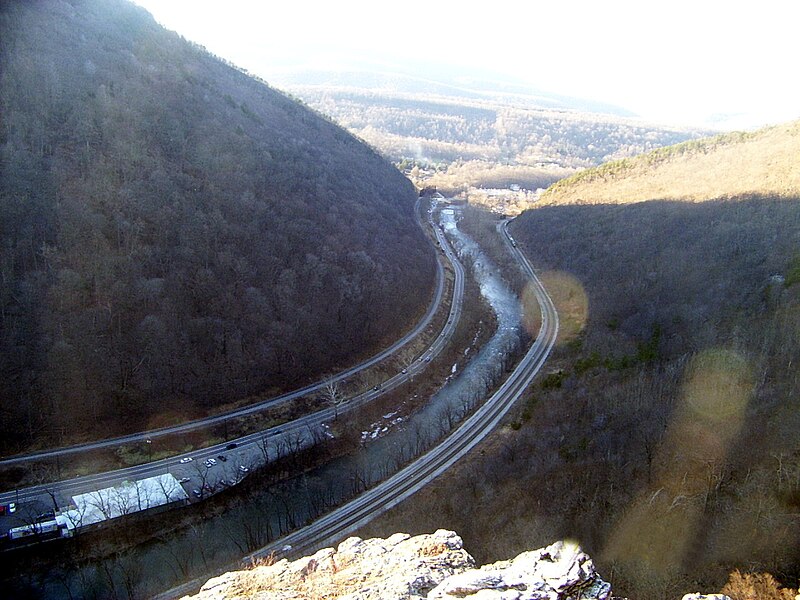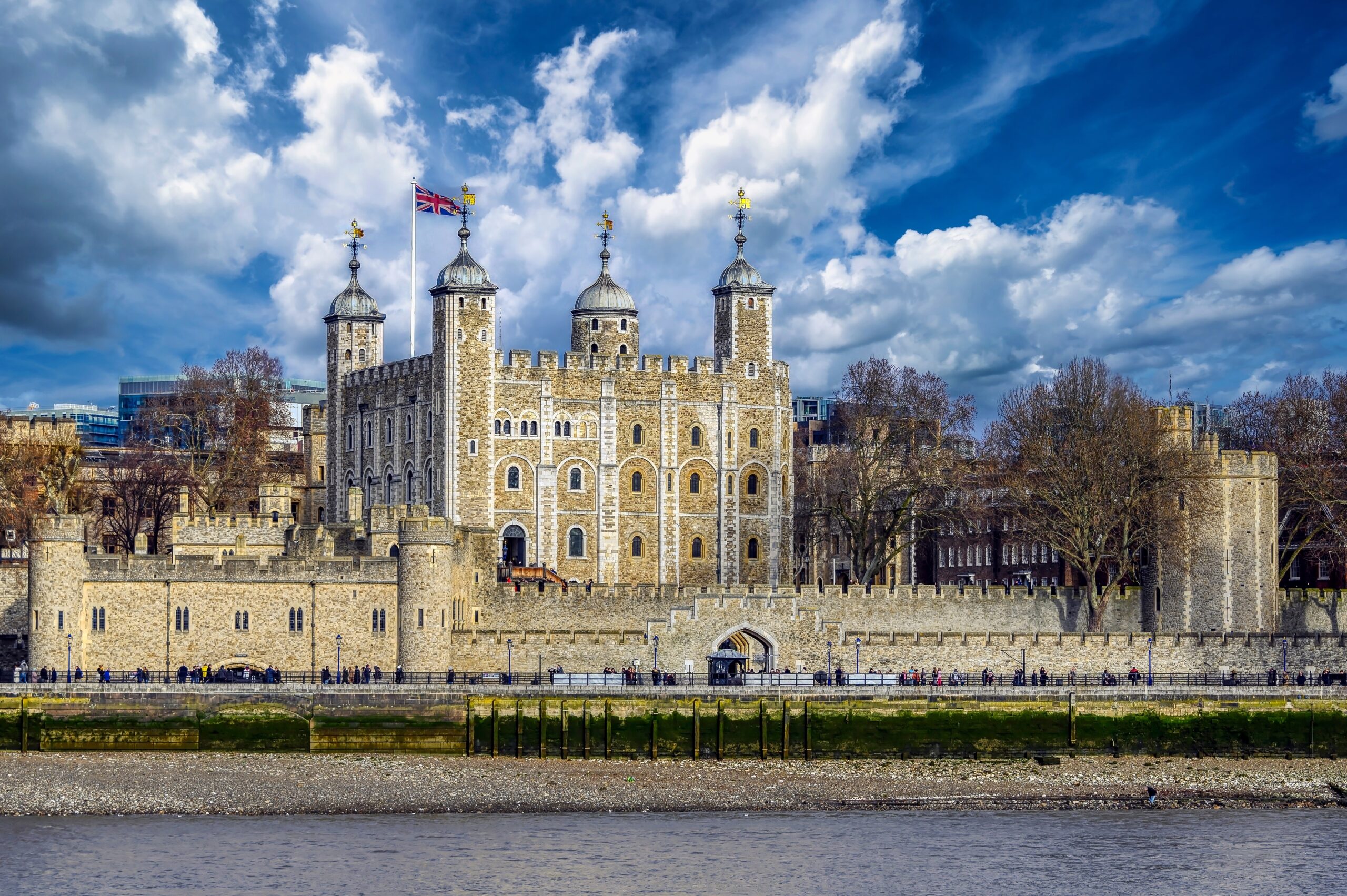The United States is home to some of the oldest roads in North America, each with a story deeply rooted in history. Many of these roads began as Native American trails and were later expanded by European settlers to connect growing colonies, facilitate trade, and support westward expansion. These historic routes not only shaped the nation’s development but also remain a testament to the ingenuity and perseverance of early Americans. Today, parts of these roads have been preserved, offering glimpses into the past while continuing to serve modern travelers. From colonial mail routes to pioneering trails, the country’s oldest roads tell the story of its growth and evolution.
The King’s Highway (Established in 1650)

Stretching from Boston to Charleston, the King’s Highway is one of the oldest and longest colonial routes in the United States. Originally ordered by King Charles II of England, it connected major cities in the colonies for trade and military purposes. Over time, sections of this route have been paved into modern roads, but the historical significance remains. The route’s original construction involved rudimentary tools, showcasing the ingenuity of early settlers. Today, remnants of the King’s Highway can be found preserved in small towns along the East Coast. This highway was critical for early communication, carrying mail and goods between colonies. Walking along portions of it today feels like stepping back in time.
Boston Post Road (Established in 1673)

The Boston Post Road began as a mail delivery route between New York City and Boston, becoming a vital artery in colonial America. Parts of the road date back to Native American trails, which were expanded by European settlers. It played a pivotal role during the American Revolution, carrying messages and troops between colonies. Today, some of its sections, like the Post Road in Connecticut, remain heavily trafficked. Historical milestones still dot its path, commemorating its role in shaping the country. Interestingly, the route inspired the modern postal service’s development. The Boston Post Road’s enduring legacy is evident in the many communities that grew along its stretch.
Camino Real de Tierra Adentro (Established in 1598)

As the oldest European trade route in the United States, the Camino Real de Tierra Adentro connected Mexico City to San Juan Pueblo, New Mexico. This 1,500-mile route played a crucial role in Spanish colonization efforts. It facilitated the exchange of goods, culture, and ideas between Mexico and the northern territories. Today, parts of the road are recognized as a UNESCO World Heritage Site. Its path is dotted with missions, pueblos, and historic landmarks that tell the story of its rich past. The Camino Real reflects the deep historical ties between the United States and Mexico. It remains a key symbol of early globalization in the Americas.
Natchez Trace (Established in the Early 1700s)

The Natchez Trace originated as a Native American trail connecting the Mississippi River to central Tennessee. European settlers later expanded it, transforming it into a key trade route for transporting goods. The road’s popularity surged in the early 19th century before railroads rendered it obsolete. Today, the Natchez Trace Parkway preserves much of the historic path, allowing visitors to experience its scenic beauty. Travelers can see ancient burial mounds and historic inns along the way. This road’s history encompasses diverse cultures, from Native Americans to European settlers and enslaved laborers. Its serene landscapes make it a favorite for modern road trips.
Great Wagon Road (Established in 1744)

Originally an Iroquois trail, the Great Wagon Road became a major route for settlers traveling south from Pennsylvania. By the mid-18th century, it was heavily used by German and Scotch-Irish immigrants seeking farmland. The road stretched over 700 miles, linking Pennsylvania to Georgia. It played a crucial role in the spread of agriculture and culture in the southern colonies. Today, parts of the road survive as rural byways, retaining their historical charm. The road’s legacy is reflected in the communities it helped establish along its path. It is often celebrated as the backbone of early American migration.
Forbes Road (Established in 1758)

Forbes Road was constructed during the French and Indian War to connect Pennsylvania with Fort Duquesne. It served as a military route, cutting through dense forests and rough terrain. General John Forbes led the construction, marking a strategic advance in the war effort. After the conflict, the road became a critical path for westward migration. Present-day highways, including parts of US Route 30, trace its original path. Its significance lies in its role in securing British control over the Ohio Valley. Forbes Road exemplifies the blend of military and settlement history in colonial America.
Old Mine Road (Established in 1600s)

Claimed to be one of the oldest continuously used roads in the U.S., Old Mine Road connected Dutch settlements in New York and New Jersey. It was primarily used to transport copper from mines in the Delaware Water Gap region. Worn by centuries of use, the road passes through scenic landscapes and historic sites. Its origins are tied to early Dutch colonization, predating many other roads. Portions of it remain accessible, offering a glimpse into 17th-century life. Old Mine Road is deeply tied to the economic history of early America. Walking or driving along it reveals layers of forgotten history.
Braddock Road (Established in 1755)

Braddock Road was constructed by British General Edward Braddock during the French and Indian War. It connected Virginia to the Ohio Valley and was crucial for transporting troops and supplies. Though its military purpose was short-lived, the road became a vital westward migration route. Its construction marked a significant engineering achievement of the time. Portions of the road are preserved in Maryland and Pennsylvania. Its history reflects the intersection of military strategy and early settlement expansion. Braddock Road’s legacy lies in its contribution to America’s early development.
Wilderness Road (Established in 1775)

Carved through the Appalachian Mountains by Daniel Boone, Wilderness Road became a lifeline for westward expansion. It opened up the Kentucky frontier to thousands of settlers, despite its rugged and narrow path. This road connected Virginia to Kentucky and was initially just a trail used by Native Americans and buffalo. The passage’s challenges, including rough terrain and the threat of attack, made it a symbol of resilience and pioneering spirit. Today, portions are preserved in Kentucky as part of historic parks and trails. Its creation marked a turning point in the migration patterns of early America. Wilderness Road remains a testament to the perseverance of early settlers.
Santa Fe Trail (Established in 1821)

The Santa Fe Trail was a key trade route linking Missouri to Santa Fe, New Mexico. It served as both a commercial and cultural bridge between the eastern United States and the southwestern territories. The trail’s establishment marked the beginning of trade between Americans and Mexicans. Spanning over 900 miles, it crossed plains, deserts, and mountain passes, making it a challenging journey. While railroads eventually replaced its function, portions of the trail remain visible today. Historical markers and preserved sections highlight its impact on westward expansion. The Santa Fe Trail symbolizes the early economic and cultural exchanges that shaped the nation.
Cumberland Road (Established in 1811)

Known as the first federally funded highway, the Cumberland Road connected Maryland to Illinois. Also called the National Road, it was a vital route for westward expansion and trade. Its construction marked a significant investment in infrastructure by the federal government. The road’s sturdy design included stone bridges and graded surfaces, setting a standard for future highways. Today, sections of the road are part of US Route 40. Historical markers and museums celebrate its role in shaping early American commerce and migration. The Cumberland Road laid the foundation for the modern American transportation network.
Old Spanish Trail (Established in 1829)

Stretching over 2,700 miles, the Old Spanish Trail linked Santa Fe, New Mexico, to Los Angeles, California. It was a challenging route, crossing deserts, mountains, and rivers. Traders used it to transport goods such as wool and horses, making it an economic lifeline for early settlements. The trail also facilitated cultural exchanges between Native American, Mexican, and European communities. Today, it is a designated National Historic Trail, with preserved sections offering insight into its history. Its rugged path highlights the determination of those who braved it. The Old Spanish Trail’s legacy is woven into the history of the American Southwest.
Mohawk Trail (Established in 1753)

The Mohawk Trail was originally a Native American trade route connecting the Hudson and Connecticut River Valleys. European settlers later expanded it, making it a crucial east-west road in Massachusetts. By the early 20th century, it became one of the first scenic highways in the United States. Today, it is celebrated for its stunning vistas and historical significance. Historical landmarks and museums along the trail tell stories of its diverse users. It is a blend of cultural, economic, and natural history. The Mohawk Trail remains a favorite destination for history buffs and nature lovers alike.
Zane’s Trace (Established in 1797)

Created by Ebenezer Zane, Zane’s Trace connected Wheeling, West Virginia, to Limestone, Kentucky. It was one of the earliest pioneer roads, cutting through dense forests and rough terrain. The road played a significant role in the settlement of Ohio and Kentucky. Tollhouses along the route charged settlers a fee for passage, contributing to its maintenance. Modern highways now follow parts of its original path. The challenges faced by those traveling Zane’s Trace reflect the hardships of frontier life. It remains a symbol of the determination and ingenuity of early Americans.
Bozeman Trail (Established in 1863)

The Bozeman Trail connected the Oregon Trail to the Montana gold fields during the mid-19th century. It was a shorter, faster route for settlers and miners, but it cut through Native American hunting grounds. This led to frequent conflicts and eventually the abandonment of the trail. Despite its short-lived use, it played a pivotal role in westward migration. Today, remnants of the trail can be seen in Wyoming and Montana. Its history is marked by both opportunity and tension. The Bozeman Trail is a reminder of the complexities of expansion in America.
Hudson River Path (Established in 1600s)

The Hudson River Path was initially a Native American trail along the river’s eastern bank. Dutch and English settlers expanded it, using it as a major route for commerce. The road facilitated trade between New York City and Albany, forming the backbone of early settlements in the region. Today, parts of the path are preserved as scenic trails. Its history is reflected in the towns and landmarks that grew along its route. The Hudson River Path played a critical role in the economic development of the Hudson Valley. It continues to inspire with its natural beauty and historical significance.
Cherokee Trail (Established in 1849)

The Cherokee Trail was used by Native Americans during their forced relocation along the Trail of Tears. It later became a route for settlers traveling west during the Gold Rush. The trail passed through Oklahoma, Kansas, Colorado, and Wyoming, covering over 800 miles. Its history is a somber reminder of the struggles faced by Native Americans during this period. Today, portions of the trail are preserved as historical sites. The Cherokee Trail highlights the intersection of tragedy and opportunity in American history. It remains a powerful symbol of resilience and migration.
This article originally appeared on Rarest.org.
More From Rarest.Org
Cathedrals stand as remarkable symbols of faith, history, and architecture, with many dating back thousands of years. These awe-inspiring structures were often built to honor religious figures or significant events, showcasing the artistry and devotion of their creators. Read more.
London is a city where history and modernity blend seamlessly, and its ancient buildings are living proof of its rich past. From medieval churches and royal palaces to Roman walls and bustling markets, these structures have stood the test of time, each with its own story to tell. Read more.
Some organisms on Earth have defied the odds, living far beyond what we might expect. These incredible examples of longevity come in all forms, from ancient trees and resilient plants to microscopic creatures thriving in extreme environments. Read more.



